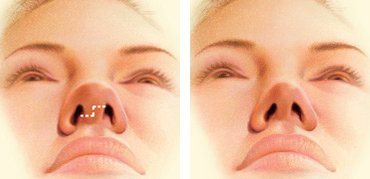Rhinoplasty in the Philippines

What is Rhinoplasty?
Benefits of Rhinoplasty
- Correct imbalance, asymmetry, disproportionate size or unsatisfactory shape of the nose and nostrils
- Permanent effect of treatment
- Can address feelings of lack of confidence and worry people may have about the size and shape of their nose
- Restore balance and proportion to the face and features
Candidates for Rhinoplasty
- Your facial growth is complete
- You are physically healthy
- You don’t smoke
- You have a positive outlook and realistic goals in mind for the improvement of your appearance
Consultation
During your rhinoplasty consultation be prepared to discuss:
- Your surgical goals, with regard to both appearance and breathing
- Medical conditions, drug allergies and previous medical treatments
- Current medications, vitamins, herbal supplements, alcohol, tobacco and drug use
- Previous surgeries
Your rhinoplasty surgeon may also:
- Evaluate your general health status and any pre-existing health conditions or risk factors
- The options available to you for nose reshaping
- Examine and measure your face
- Take photographs
- Discuss your nose surgery options
- Recommend a course of treatment
- Discuss likely outcomes of a nose surgery and any risks or potential complications
Risks and Safety
Rhinoplasty surgery risks include:
- Anesthesia risks
- Infection
- Poor wound healing or scarring
- Change in skin sensation (numbness or pain)
- Nasal septal perforation (a hole in the nasal septum) is rare. Additional surgical treatment may be necessary to repair the septum but it may be impossible to correct this complication
- Difficulty breathing
- Unsatisfactory nasal appearance
- Skin discoloration and swelling
- Possibility of revisional surgery
These risks and others will be fully discussed prior to your consent. It is important that you address all your questions directly with your plastic surgeon.
Preparation
- Get a lab test
- Take certain medications or adjust your current medications
- Stop smoking
- Avoid taking aspirin, anti-inflammatory drugs and herbal supplements as they can increase bleeding
Your plastic surgeon will also discuss where your procedure will be performed.
Procedure
Step 1 – Anesthesia
Medications are administered for your comfort during the surgical procedure. The choices include intravenous sedation or general anesthesia. Your doctor will recommend the best choice for you.
Step 2 – The incision
Rhinoplasty is performed either using a closed procedure, where incisions are hidden inside the nose, or an open procedure, where an incision is made across the columella, the narrow strip of tissue that separates the nostrils. Through these incisions, the skin that covers the nasal bones and cartilages is gently raised, allowing access to reshape the structure of the nose.
Open rhinoplasty incision across the columella

Step 3 – Reshaping the nose structure
An overly large nose may be reduced by removing bone or cartilage. Sometimes surgery of the nose may require the addition of cartilage grafts. Most commonly, cartilage from the septum, the partition in the middle of the nose, is used for this purpose. Occasionally cartilage from the ear or rarely a section of rib cartilage can be used.
Step 4 – Correcting a deviated septum
If the septum is deviated, it can be straightened and the projections inside the nose reduced to improve breathing.
Step 5 – Closing the incision
Once the underlying structure of the nose is sculpted to the desired shape, nasal skin and tissue is redraped and incisions are closed. Additional incisions may be placed in the natural creases of the nostrils to alter their size.
Step 6 – See the results
For a few days, splints and gauze packing may support the nose as it begins to heal. Get more information about rhinoplasty results.
Recovery
You will be given specific instructions that may include:
- How to care for the surgical site
- Medications to apply or take orally to aid healing and reduce the potential for infection
- Specific concerns to look for at the surgical site or in your general health
- When to follow up with your plastic surgeon.
Be sure to ask your rhinoplasty surgeon specific questions about what you can expect during your individual recovery period:
- Where will I be taken after my surgery is complete?
- What medication will I be given or prescribed after surgery?
- Will I have dressings/bandages after surgery?
- When will they be removed?
- Are stitches removed? When?
- When can I resume normal activity and exercise?
- When do I return for follow-up care?
Results
What to expect in Rhinoplasty
The results of rhinoplasty surgery will be long-lasting. While initial swelling subsides within a few weeks, it may take up to a year for your new nasal contour to fully refine. During this time, you may notice gradual changes in the appearance of your nose as it refines to a more permanent outcome.
As your body ages, it is natural to have some gradual changes to your face including your nose. But most of your improvement should be relatively permanent. A healthy lifestyle and life-long sun protection will help extend the results of your new appearance.
